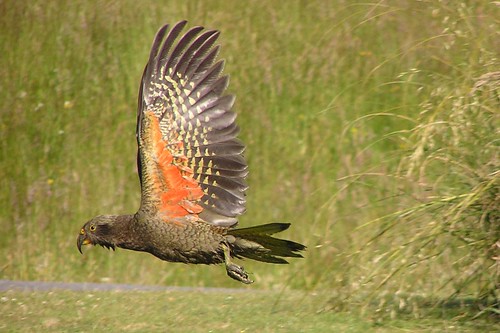 Kea on Mount Cook. Image by Neville10The Government seems hell-bent on sounding the death knell for the kea, New Zealand’s beloved mountain parrot, and other birds and insects, says New Zealand First.
Kea on Mount Cook. Image by Neville10The Government seems hell-bent on sounding the death knell for the kea, New Zealand’s beloved mountain parrot, and other birds and insects, says New Zealand First.
"No amount of research, reports and anecdotal evidence will budge the Government from thickly laying 1080 poison over our bush every year, apparently as the only way to kill predators that threaten our native species," says Outdoor Recreation spokesperson Richard Prosser.
"The Department of Conservation’s own figures show that 13% of monitored kea are killed even when 1080 has been treated with bird repellent, because the repellent doesn’t work.
"Worse still, the Government is now allowing DOC to bombard an additional 500,000 hectares of bush and conservation land with this known systemic eco-toxin, even though their own researchers won’t have an alternative proven repellent available when poisoning begins.
"This madness will drive the kea to extinction more surely and more quickly than the predators they claim to be targeting.
"New Zealand First would instead move to ground-based methods, such as bait stations and trapping, to control predators and TB vectors," Mr Prosser says.
"We are totally opposed to the use of aerial 1080, our native species have nowhere to hide from this poison.
"The Government failed miserably in Parliament today to answer my questions on 1080, with Minister for the Environment, Amy Adams, not even able to explain adequately how stoats die from 1080.
"For her information, in the case of stoats it is secondary poisoning that has an effect, because the stoats don’t eat the baits directly, they die from eating other things that have been poisoned.
"There are alternatives, the hope is more people will realise this and get the message to the Government," says Mr Prosser.